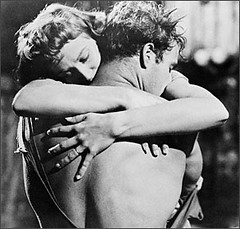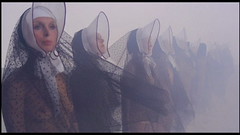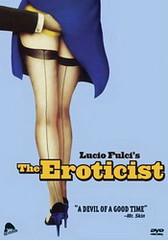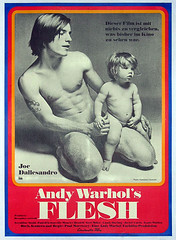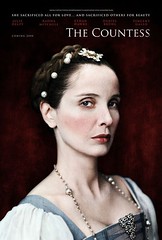Kim Hunter (Stella) takes Stanley (Marlon Brando) back.
A Streetcar Named Desire is a 1947 play written by Tennessee Williams. It was both a critical and box office success. The story concerns a sexual triangle of Blanche DuBois—a pretentious, fading beauty; macho alpha male Stanley Kowalski, a rising member of the industrial, inner-city immigrant class; and Stella Kowalski, the submissive sister of Blanche.
Stella is a victim of domestic violence and often finds herself taking refuge at her neighbour Eunice’s home, only to return to Stanley when he cries for her to take him back. Blanche, who has arrived for a “visit”, is horrified by her sister’s situation and tries to convince Stella to divorce Stanley, but Stella refuses, bound to Stanley by sexual attraction and her pregnancy with his child.
The night Stella is having their baby, Stanley drunkenly happens upon Blanche and rapes her. This sends Blanche completely over the edge into a nervous breakdown, and Stanley forces Stella to send her off to a mental institution.
In some versions of A Streetcar Named Desire, Stella leaves Stanley after she finds out about the rape.

